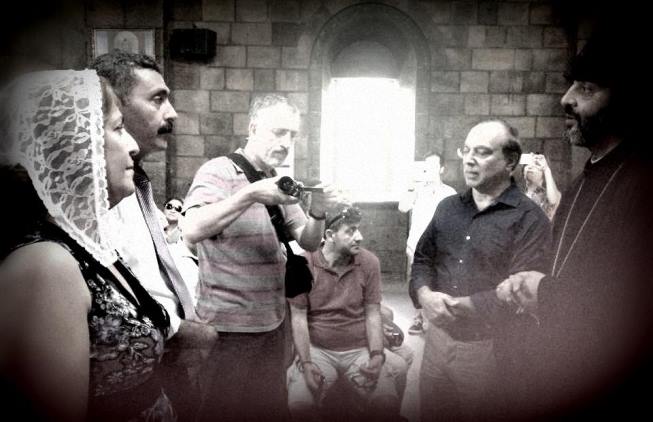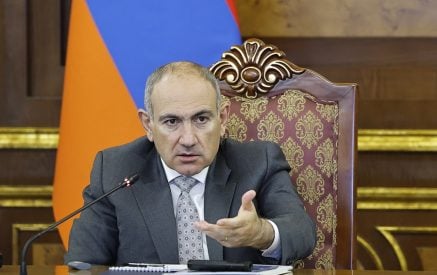By
(A.W)- Over the years, I have met many hidden Armenians from different regions of Turkey. Each one has a unique story that can become an article or even a book on its own. Some stories can be shared; most cannot. Some are funny; most are sad.
Recently, many hidden Armenians decided to return to their roots, culture, and language after they discovered their Armenian origins and the forced Islamization/Turkification/Kurdification of their grandparents, who were orphans and the living victims of the Armenian Genocide.
In 2014 and 2015, I organized trips for dozens of them from Turkey to Armenia, in cooperation with Armenia’s Ministry of the Diaspora. In past articles, I have shared the stories of some of these “no longer hidden” Armenians. In this article, I will tell some stories of the “still hidden” Armenians, names withheld for obvious reasons.
Let me start with a memory from my days in the Turkish army. Although I was already living in Canada at the time, I had to return to complete my compulsory military service in the Turkish army in order to be able to travel back to Turkey to take care of my elderly parents. On top of the drills and other military activities during the day, the conscripts were required to attend lectures in the evening. One of the subjects was “Who are the enemies of Turkey?” After discussing the assorted bad deeds of all the “enemy” neighboring countries, such as Soviet Russia, Iran, Iraq, Syria, Bulgaria, and Greece, the instructor would inevitably conclude that the worst enemy were the Armenians, since they had massacred the Turks in 1915 and were still after Turkish diplomats.
After these lectures, a few fellow conscripts with Turkish or Kurdish names, especially from the eastern provinces, would approach me and confess that their grandmothers were Armenian, or that they lived in a house left behind by Armenians, or that their village was Armenian before 1915 but had converted to Islam.
When I started writing articles about the hidden Armenians and the Surp Giragos Church reconstruction project in Diyarbakir (Dikranagerd), an elderly Armenian lady from the United States made contact with me. She was an orphan of 1915 and had found her way to the U.S. Her brother, however, had to remain in Turkey and was eventually Islamized and Turkified. This brother prospered and became a successful builder in Turkey, with cement plants in many provinces. After some research, I tracked his grandson in Turkey, a man in his early thirties, who had carried on the family construction business, building luxury condos in Istanbul. He was aware of his Armenian past, but obviously unable to reveal it publicly for fear of losing his wife, business, and status as a successful Turkish builder. He eventually made contact with his grandfather’s Armenian sister in the U.S. and visited her.
“My grandfather’s sister had one request when I traveled to the U.S. to see her, to lie in bed with her, just as she had done with her brother when they were little, so that she can smell the scent of her brother,” he explained to me. And that is just what they did—an 85-year-old Armenian woman hugging in bed with a Turkish condo builder in his thirties that she just met, in order to remember her long-lost family.
There are many stories of orphans torn apart from their loved ones in 1915. Some were brought to orphanages under the control of the victorious Allies after WWI, eventually finding their way to the Armenian Diaspora or Soviet Armenia, while others were placed in Turkish orphanages, becoming Muslim Turks or Kurds. We witnessed a few happy reunions on our trips, as once-hidden Armenians found their long-lost relatives in Armenia for the first time. We brought together a 65-year-old hidden Armenian from Diyarbakir with his cousin, a 70-year-old villager from Armavir region. One didn’t speak Armenian, the other didn’t speak Turkish, but they held hands and hugged each other continuously for three hours during a dinner.
Hamshen (or Hemshin) is the name given to people living in the eastern Black Sea coastal region of Turkey. There is strong evidence that they are Armenians who have migrated to this region after Seljuk Turks captured the city of Ani in the eleventh century, followed by more waves of Armenians settling in the region in later times. Soon after, in the 16th century, the region was conquered by the Ottoman Turks, and the Armenians were eventually forced to convert to Islam. Most of them did convert, but interestingly enough they kept the Armenian language, and continue to keep it until today. And although they still speak a dialect of Armenian, with constant indoctrination from the government they have been made to believe that their ancestors migrated from Central Asia and their language was a branch of Central Asian Turkish.
Until recently, most Hamshen people had a strong nationalistic—even racist—allegiance to Turkey. In conversation with a Hamshen woman, I was amazed to hear the following: “Yes Hay chem. Yes Turk em” (“I am not Armenian. I am a Turk.”)—in Armenian!
Since the early 2000s, Hamshentsis (Hamshen people) have started to search for their real, Armenian roots. Here is the story told by an elderly Hamshentsi about how people in the region first got a clue that what they spoke was Armenian and not a Central Asian Turkic language. In 1982, Armenian Secret Army for the Liberation of Armenia (ASALA) commandos carried out an unsuccessful attack at the Ankara airport. All were killed, except Levon Ekmekjian, who was captured, tortured, and then put on trial. His trial was aired live on Turkish television, and Ekmekjian gave his testimony in Armenian, which was then translated to Turkish. People all over Turkey, including the Hamshentsis, were glued to the television watching the trial. The Hamshen people were surprised to discover that Levon spoke their own language. Many of them wondered if he was a Hamshentsi, and eventually realized that their language is Armenian, like his.
As a postscript to this story, the trial was just a formality, and Ekmekjian was executed in Jan. 1983, buried in an unmarked grave until 2016, when the heroic Turkish human rights lawyer Eren Keskin succeeded in having Levon’s remains transferred to France, to reunite with his family.
On a happier note, one of the hidden Armenians from Hamshen who traveled to Armenia with me met a hidden Armenian woman from Diyarbakir, and they are now married.
In the mid-1990s, I joined the Hayastan All Armenia Fund as a volunteer participant in reconstruction projects. One of the projects was the reconstruction of the Spitak church, which was damaged during the 1988 earthquake, financed from an account in Switzerland administered by lawyers on behalf of an anonymous donor—who turned out to be the hidden Armenian grandmother of a very wealthy, high-profile Turkish family.
In 2013, I was fortunate enough to accomplish one of my bucket-list items by climbing Mount Ararat with my son Daron. The starting point for the expedition was a town named Doğubayazıt—the former Daroynk of medieval Armenia, now populated entirely by Kurds, except for Turkish security forces. One of the roads is built with the contents of the Armenian cemetery, with Armenian-scripted gravestones and bones still visible on the road shoulders. The grandmother of one of the Kurdish mountain guides was Armenian, and he fondly remembered how she prayed five times a day as a Muslim, while keeping a cross and Bible under her pillow. The guide had 18 brothers and sisters, most of them married to other Kurds with Armenian grandmothers in their families, and each brother and sister had at least five children themselves. He wished his children would go to a university on the other side of the mountain, in Armenia, instead of a Turkish university.
Hidden Armenians have complicated lives, full of emotional turmoil and psychological scars. They are shunned by Muslim Turks and Kurds—and also by most members of the Armenian community in Istanbul and the Armenian Patriarchate.
When the grandchildren of forcibly Islamized Armenian orphans find the courage to come out and return to their Armenian roots and identity despite all the risks, discrimination, and abuse they will receive in their neighborhood, workplace, and even their own families, they must be encouraged, not rejected. Sure, there may be opportunistic pretenders with Armenian claims for personal gain who should be investigated and scrutinized, but I have come to realize that through my network of hidden Armenians and their links it is surprisingly easy to uncover them. For example, when someone claiming to be Dersimtsi Armenian approached a cleric here in Toronto, I was able to determine the truth about him after some questioning and investigation in his Dersim village. When I took hidden Armenians to Armenia and some of them wanted to become Christian by baptism, it was easy to determine through family ties back in Diyarbakir whether they really had Armenian roots. The obstruction of some clerics preventing them from becoming Christian Armenian is unreasonable, however, when a trustworthy Armenian godfather (gnkahayr) is vouching for the truth.
Being born an Armenian is not a choice, and if someone chooses to return to his/her roots after discovering his/her Armenian origin, no cleric or government official has the right to prevent that. Whether someone adopts a new religion is a choice that comes later. There are many differing viewpoints on the subject of who can “become an Armenian.” Of course, there is freedom of thought and expression, but if someone in power or influence makes a decision that infringes on another’s freedom, that is simply unacceptable.

























































